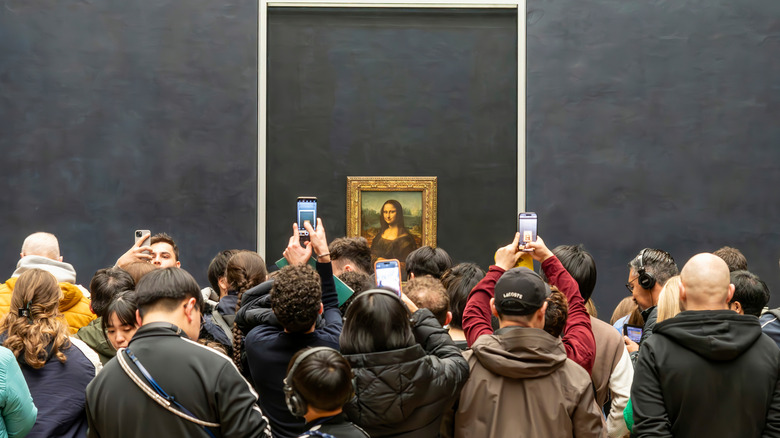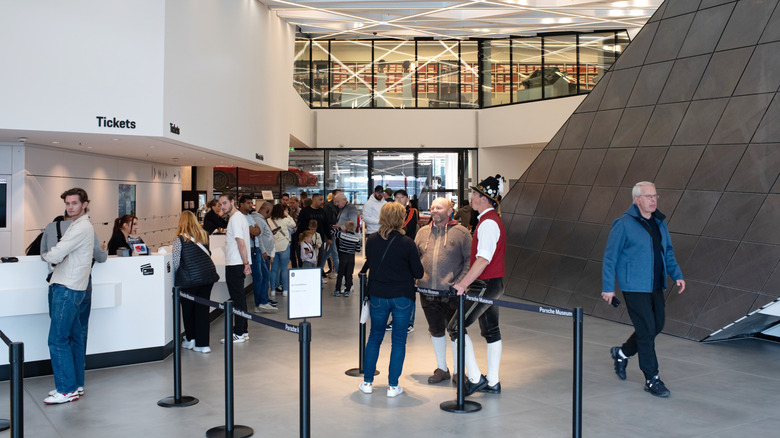Rick Steves Shares His Best Secret To Avoiding Crowds While Exploring European Museums
As much as travelers would like to skip Europe's most overtouristed places, their historical significance and cultural draws may be too tempting to miss out on. Case in point are Europe's most lauded museums, where world-class artworks — a pity to not see in person while you're already there — unfortunately come with heaving crowds. In fact, museum overcrowding in Europe has gotten so bad that the Louvre, which welcomed 8.7 million visitors in 2024 according to CNN, closed its doors to ticket holders for several hours in June 2025, citing staff exhaustion from dealing with overwhelming crowds on a daily basis. Fortunately, travel expert Rick Steves offers us a sliver of hope when it comes to experiencing a museum's treasures without being crushed by the crowds — but it all depends on the time you decide to show up.
With decades spent honing his craft in the art of traveling, Steves' general rule of crowd avoidance — getting out early and staying out late — can be applied to museum scenarios. Timing, he says, is everything. "In many cities, several sights tend to be closed on the same day of the week (usually Sunday, Monday, or Tuesday). It follows that, in high season, any major sight that's open when everything else is closed is guaranteed to be crowded," Steves writes on his blog. Visiting during a museum's low-traffic hours can radically change your European museum experience, even though it means waiting in line before the museum doors open or entering the museum later in the evening as the afternoon crowds thin out.
Strategize your timing for museum visits
Aside from early and late museum visits, Rick Steves suggests dropping in during a museum's designated late-night opening — a practice adopted by a number of important museums in major cities on specific nights of the week. You can take advantage of these extended museum opening hours in France, Germany, Italy, and England, to name a few. "When most tourists are lying exhausted in their rooms, I linger alone, taking artistic liberties with some of Europe's greatest works in empty galleries," Steves says.
Of course, the time of year can also alter your museum-hopping experience. You'll most likely encounter fewer tourists in April and October, Europe's shoulder season, with the added benefits of pleasant weather and longer daylight hours. With the summer tourists gone, you may even encounter better customer service and more affordable prices in general.
That said, visiting a museum during the off-peak season won't magically make the crowds disappear. "There are still some peak seasons and those peak seasons remain really busy, but the low seasons are getting busier and busier as well," Olivier Ponti, director of Spanish travel data company ForwardKeys, told CNN. That said, proactively reserving museum entrance tickets is just good sense, not to mention a simple action you can take in advance to avoid crowds. This lets you skip the labyrinthine lines that non-ticket holders are subjected to, allowing you to quickly cross the museum visit off your list and giving you time to experience a slice of genuine everyday life in European countries.

